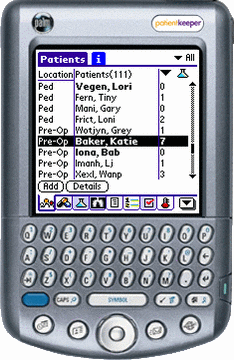|
|

An 81-year-old woman
presents to the emergency department with left upper
quadrant pain associated with constipation and fever for
the last 3 months. The patient had recently been examined
by her primary care provider and told that her left kidney
”was not working right” and that she had kidney stones.
She is concerned about a hard lump on the left side of her
abdomen.
On physical examination, the patient‘s vital signs are
temperature 36.2°C, blood pressure 155/67 mm Hg, pulse 85
beats per minute, respiratory rate 18 breaths per minute,
and O2 saturation 97% on room air. In general,
the patient is a pleasant, talkative, alert woman in no
acute distress. Her heart and lung findings are
unremarkable. She has mild abdominal distention with normal
bowel sounds and tenderness in the left upper quadrant with
a palpable mass along the left colic gutter. The patient
has no rebound, guarding, or rigidity, but mild tenderness
over the left costovertebral angle is elicited.
Laboratory data reveal an international normalized ratio of
1.24, an activated partial thromboplastin time of 27
seconds, and a creatinine value of 1.7 mg/dL. The
patient‘s WBC count is 13.8 X 109/L with a
hematocrit of 29% and platelets of 379 X 103/µL.
Urinalysis shows 61 WBCs per high-powered field, but the
results are otherwise normal, with no bacteria.
Abdominal and pelvic CT with intravenous and oral contrast
enhancement was performed.

What
is the diagnosis?
Answer
Xanthogranulomatous
pyelonephritis (XGP): The CT scan demonstrates a
markedly dilated left renal pelvis and calyces with
a large staghorn calculus in the renal pelvis. The
left kidney is mildly enlarged and multilobulated.
The renal cortex has a thin rim of relatively
intense enhancement. These findings are consistent
with XGP.

XGP
is a chronic renal infection that leads to scarring
of the renal cortex, dilatation of the calyces and
renal pelvis, and diffuse infiltration of the renal
parenchyma with lipid-laden macrophages intermingled
with lymphocytes, plasma cells, polymorphonuclear
leukocytes, and occasional giant cells.
Xanthogranulomatous refers to the yellow masses that
form in the kidney as a result of the high lipid
content of the infiltrating macrophages.
A calculus in the renal pelvis occurs in greater
than 75% of all cases of XGP. The calculus is
usually staghorn in shape and composed of struvite.
This process develops from long-standing partial
obstruction of the renal pelvis due to stones,
stricture, or uroepithelial tumor. The histologic
response is thought to result from the liberation of
lipid from the cells destroyed by bacterial
infection. The inflammatory process often extends
into the psoas muscle and the perirenal space. The
renal parenchyma usually does not become calcified.
XGP is often observed in patients with diabetes
mellitus or those who are otherwise
immunocompromised.
XGP is 4 times more common in women than men and
typically observed in the fifth or sixth decades of
life. Typical signs and symptoms are weight loss,
malaise, anorexia, low-grade fever, and abdominal
and flank pain. The pain of XGP is not colicky; it
is usually dull and persistent. Patients often have
no lower urinary tract symptoms. The kidney may be
palpable on examination. Pyuria, leukocytosis,
anemia, and albuminuria may be present. Bacteria are
not typically cultured from urine. If they are, the
most common organisms are Proteus mirabilis
or Escherichia coli, though Pseudomonas
species can also be involved. XGP can lead to
fistulae; pyelocutaneous, ureterocutaneous, and
pyeloenteric fistulae are all well described.
Radiographs of XGP usually demonstrate the staghorn
calculus in the enlarged, multilobulated kidney that
does not opacify during excretory urography.
Retrograde pyelography shows irregular filling
defects in the dilated renal collecting system.
Ultrasonography depicts pelvocaliectasis with many
fine echoes in the collecting system because the
products of inflammation fill the calyces. A CT scan
can show the pelvocaliectasis, staghorn calculi,
lobulated and enlarged kidney, and a thin rim of
intensely enhancing renal cortex due to inflammatory
tissue in the calyceal wall and renal parenchyma. CT
scanning is also helpful for demonstrating extension
into the psoas muscle or the perirenal and pararenal
spaces.
Treatment with antibiotics alone is inadequate, but
it may be used as a temporizing measure in patients
requiring a medical workup before nephrectomy. The
choice of antibiotic should be specific to any
organism isolated on urine culture. Nephrectomy is
the definitive treatment for XGP. All involved
granulomatous tissue should be removed to minimize
the risk of remaining infected tissue leading to
cutaneous fistulae. Open nephrectomy is typically
preferred because of the technical difficulties
often encountered with laparoscopic techniques. This
patient underwent left nephrectomy. Her symptoms
resolved, but she continued to have mild chronic
renal failure.
References
- Cotran RS, Kumar V, Collins T. Robbins
Pathologic Basis of Disease. 6th ed.
Philadelphia: W. B. Saunders; 1999: 977.
- Davidson AJ. Radiology of the Kidney.
Philadelphia: W. B. Saunders; 1985: 315-7.
|
Link
to further Information on:

For
more information on XGP, see the eMedicine articles Xanthogranulomatous
Pyelonephritis (within the Radiology specialty) and Xanthogranulomatous
Pyelonephritis and Renal
Corticomedullary Abscess (within the Internal Medicine
specialty).
|
|








 DISCLAIMER:
This website is designed primarily for use by qualified
physicians and other medical professionals. The
information provided here is for educational and
informational purposes only. It is not guaranteed to be
correct and should NOT be considered as a substitute for
the advice of an appropriately qualified expert. In no way
should the information on this site be considered as
offering advice on patient care decisions or establishment
of a patient-physician relationship.
DISCLAIMER:
This website is designed primarily for use by qualified
physicians and other medical professionals. The
information provided here is for educational and
informational purposes only. It is not guaranteed to be
correct and should NOT be considered as a substitute for
the advice of an appropriately qualified expert. In no way
should the information on this site be considered as
offering advice on patient care decisions or establishment
of a patient-physician relationship.